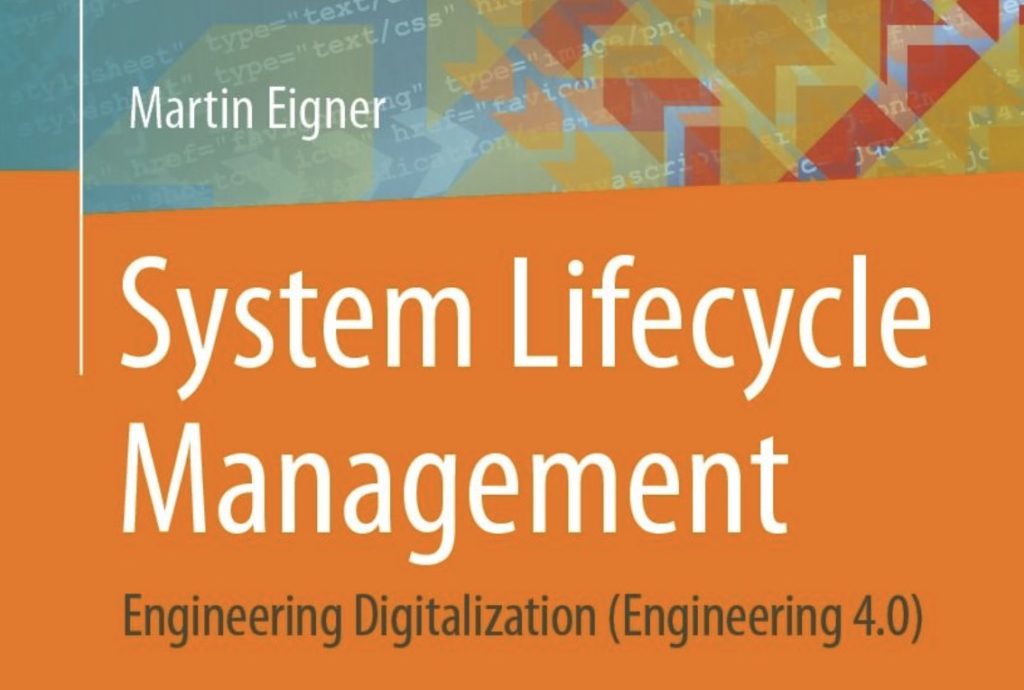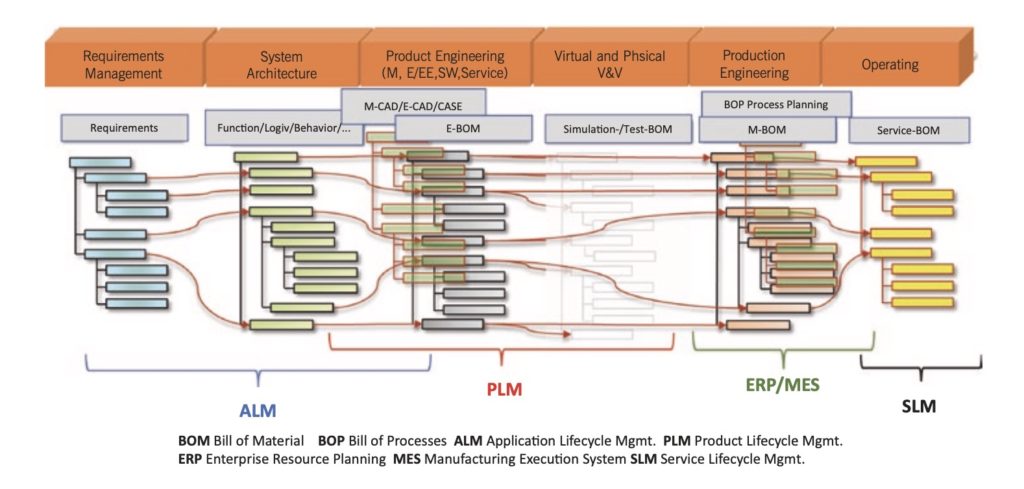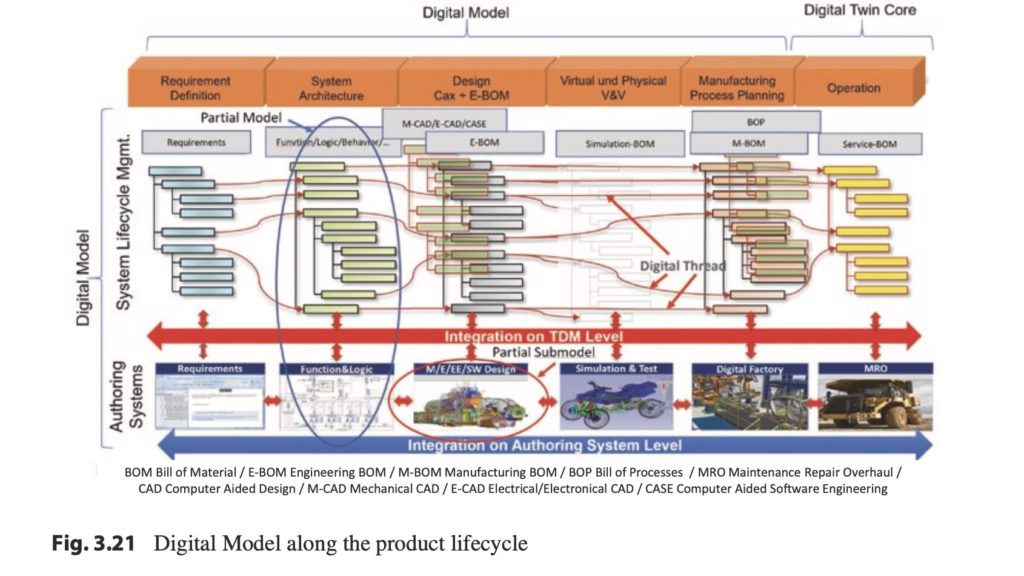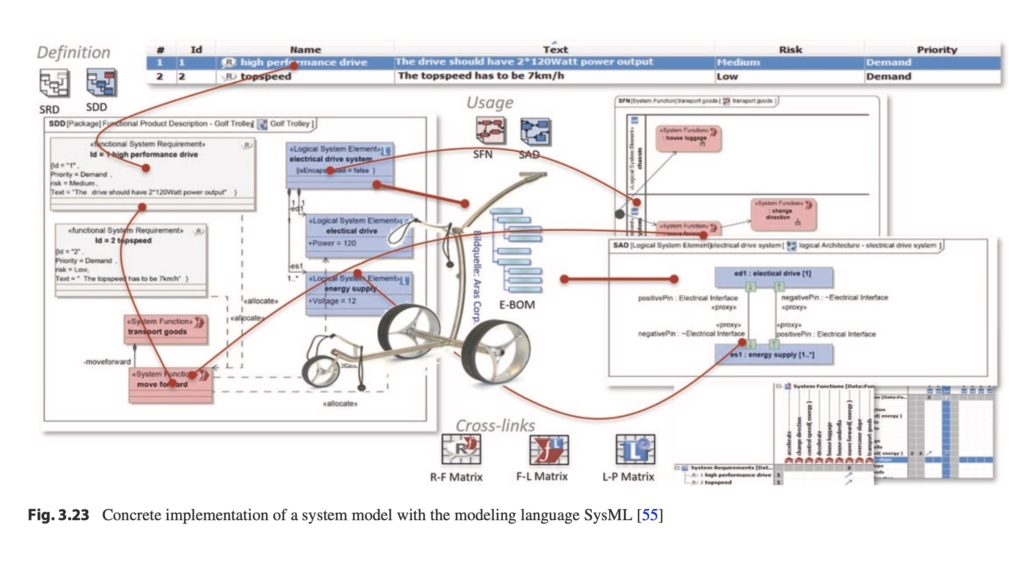
As products are getting more complex and connected, the question of what systems are needed to support such complex development is the one that is in the minds of people in a variety of fields related to engineering and manufacturing from research institutes to manufacturing companies of different sizes. Martin Eigner, who has experience in the area of Product Lifecycle Management kindly shared his latest book System Lifecycle Management. I have to admit that I spent a big part of my last two weekends with this book, first reading and later digesting what I read and learned there.
The last 40 years marked the evolution of engineering and manufacturing software from systems managing engineering documents, later to manage product data. In his book, Martin Eigner differentiates between Document Management, Engineering Databases (EDB), and later PDM/PLM systems. These systems with various names have been growing with the scope of data and exposure to different processes in the organizations.
I like the following picture which describes the agreed model used by all PLM providers. The core of this model is the connection of domain models within the scope of software provided by different vendors – ALM, PLM, ERP, SLM.

Modern product development is influenced by two major trends – (1) Complexity and (2) Digitalization. The most interesting part is that these two trends are naturally intertwined. The products are getting more complex, includes elements of electronics, software, and becoming connected (eg. including software elements living in the cloud). At the same time, our overall experience is becoming more digital and connected. Electronic devices and digital services are replacing paper and old-fashioned documents. Wider adoption of connected services made it possible to change the processes used by companies and their customers. These two trends are accelerating as they are fueling each other.
System Model is the answer to this complexity. It has multiple domains such as IoT (Internet of Things), Digital Twin and Digital Thread, and system modeling and system thinking. However, in my view, the most important foundations of Engineering 4.0 are Digital Model and System Model. The first one is the foundation that takes all discipline-specific activities and turns them into a digital form. The second is the way to combine all digital models together into a functional meaning system that can be used to manage all stages of the product life cycle.

System Model has two main purposes – to connect discipline-specific models together as well as to verify the overall system against the initial set of requirements. The key element to understand about a system model is that it is neutral to all domain-specific models. Here is a passage from the book speaking about the connection between both.

The advantage of the system model is the extensive neutrality in relation to concrete disciplines, at least on the top abstraction level. A function is initially dependent on the implementation of a discipline. Similarly, to Pahl/Beitz [78], a function is only actually implemented with the depiction of the respective working principles. However, before the discipline-specific development is applied, there must be partitioning on various disciplines. The system model, consisting of requirements linked with the system architecture, is the central modeling concept for a digitalized engineering process for interdisciplinary, cybertronic products, and systems as well as services. Figure 3.25 shows the central importance of the system model for the following partially discipline- orientated partial models of the product lifecycle.
Trends, models, and languages are good, but what is not less important is how all these elements will be combined and implemented together using existing and future software tools, data management technologies and integration techniques. It leads to many questions about how actually the implementation of system life cycle approaches – data models, information systems, and processes.
I like the way the System Model is presented, but in the context of every single company, it leads to a very pragmatic question – who owns this system model? An important question is how it will impact the implementation of other products and tools. The current status quo of PLM development is very problematic – vendors are pushing into a bigger vision of platforms with increased vertical integration and it leads to even bigger challenges in cross-system integration and interoperability.
The current state of PLM development is described in the book in the form of over-customized cars. I hope you can appreciate the picture and the joke.

The good news in the space of System Life Cycle implementation is the growing adoption of cloud system and service-oriented architecture, polyglot data management architectures, and virtualization. SaaS applications are more agile, allow better integration, and can be used in a variety of forms to create system layers on top of existing discipline-specific software packages.
The following simple diagram shows how to file structure management by a CAD tool can be translated into a model, which can be used beyond traditional file management systems.

Modern SaaS-based systems are capable to perform such transformation as well as making system models available and open to connectivity across the multi-organizational boundaries.
What is my conclusion?
Product Complexity and Digital Transformation are two main factors leading towards future transformation of engineering and manufacturing software. We are going to see many examples of a new systems developed in the next 5-10 years. The biggest challenge of System Lifecycle Management remains the same – organization of information flows and data interoperability. Companies, products, and services are getting more connected. But the same cannot be said about PLM tool developments. The openness and interoperability between the tools is the key to make the PLM industry move to a system lifecycle approach. Just my thoughts…
Best, Oleg
Disclaimer: I’m co-founder and CEO of OpenBOM developing a digital network-based platform that manages product data and connects manufacturers, construction companies, and their supply chain networks. My opinion can be unintentionally biased.
The post A Look Into System Lifecycle Management Book by Martin Eigner appeared first on Beyond PLM (Product Lifecycle Management) Blog.



Be the first to post a comment.